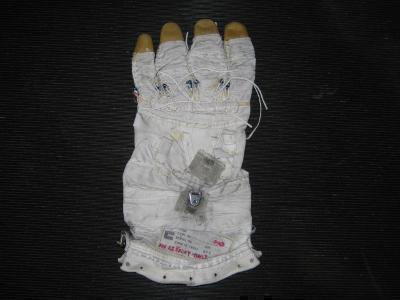Shuttle Training Aircraft And Full-Scale Shuttle Mockup Explorer Available
WASHINGTON, DC /PRNewswire-USNewswire/ — The final space shuttle landing July 21 opened new prospects for eligible education institutions, museums and other organizations to receive a piece of spaceflight history. As of Monday, Aug. 15, the eighth batch of artifacts from NASA’s space programs is available on a website that NASA and the General Services Administration (GSA) developed.
The artifacts are not only from the shuttle era, but also from the Apollo, Mercury, Hubble Space Telescope programs. The items include:
- the full-scale space shuttle orbiter mockup Explorer, currently on display at the Kennedy Space Center Visitor Complex in Florida
- the Scott Carpenter Space Analog Station, an underwater habitat, currently at Johnson Space Center in Houston
- parts of Apollo and shuttle era spacesuits
Each artifact will be available for 42 days. For the first 21 days, internal organizations such as NASA visitor centers, agency exhibit managers and the Smithsonian Institution may request artifacts. External organizations, including museums, schools, universities, libraries, and planetariums may request artifacts during the following 21 days. After the screening period and completion of the request process, organizations will be notified about the status of their application.
Artifacts are incrementally released when NASA no longer needs them, in accordance with export control laws and regulations. They are provided free of charge, but requesting organizations must pay for shipping and any special handling costs.
To date, approximately 29,000 items of historic significance have been offered, mainly from the shuttle, with contributions from the Hubble, Apollo, Mercury, Gemini, and International Space Station programs. Approximately 3,000 artifacts have been requested. The remainder will be considered for federal and state reuse and then offered to the general public for sale.
For information about NASA’s space shuttle transition and artifacts, visit:
http://www.nasa.gov/transition http://artifacts.nasa.gov
In addition to artifacts, NASA also is offering, for donation and possible sale, a Shuttle Training Aircraft (STA) through another GSA hosted web-based site: http://gsaxcess.gov/
The STA is a modified Gulfstream II that allowed pilots to simulate orbiter landings under controlled conditions. Other STAs will be displayed at NASA’s Johnson Space Center in Houston, Dryden Flight Research Center in California, and the U.S. Space and Rocket Center in Huntsville, Ala.

